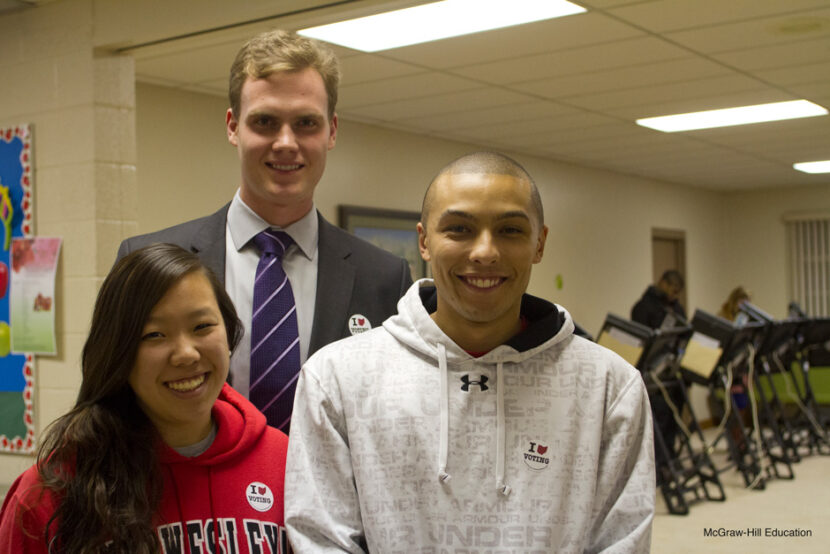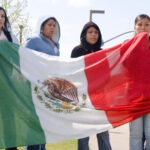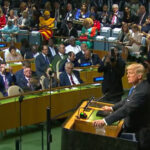- Current Events Nebraska Rejects Winner-Take-All Proposal
- Citizenship Voting Under Age 18
- Citizenship Citizenship in Action
- Democratic Party Biden’s and Trump’s Recent Primary Results
- Elections Trump and Biden Win South Carolina and Michigan Primaries
- Democratic Party Trump and Biden Win Big in Early February Contests
Politicians Chase the Youth Vote
Have you ever participated in Kids Voting, or any other voting simulation? Do you know who you would have voted for in the 2016 presidential election if you’d had the chance?
In races all over the country, candidates target the “youth vote” (young millennials, ages 18 to 29) with television and social media ad campaigns encouraging them to register and cast a ballot. And it’s not hard to see why. The 2020 elections will mark the first time that millennials outnumber baby boomers. But how much of an impact will young voters really have on the elections of the future, and is their support more likely to help Republicans or Democrats?
A Much-Needed Boost
Based on a quick glance, it seems like the Democrats have more to gain from the youth vote than Republicans do. Voters under 30 identify as Democrats at a much higher rate than older voters do. They are also more likely to identify themselves as “liberal” or “very liberal.” This trend has only been increasing since 2004. In fact, over the past two years, 23 percent of young Republicans switched over to the Democratic Party, while only 9 percent switched from Democrat to Republican. And as the nation as a whole grows more diverse, it’s likely that the number of young Democrats will continue to grow as well.
Young people tend to change their political loyalties a lot, but once they settle down and identify with a particular political party, they tend to stick with it. What that means is that if you decide that you are a Republican or Democrat in your early twenties, chances are you will identify with that party for life. So the fact that the youth vote is growing more strongly Democratic seems to point to a hopeful future for the Democratic Party.
More to the Story
However, it’s not that simple. Young people still have a very low voter turnout (meaning that only a low percentage votes). Only 43 percent of young millennials voted in the last presidential election, compared to 60 percent of the country overall. Numbers are likely to be even lower for the upcoming midterm elections.
To further complicate matters, young people are much more likely than their older counterparts to vote for a third-party candidate. For example, in the 2016 presidential election, young millennials were almost three times as likely to vote third-party as older voters were. They are also more likely to register as Independents. This is another reason why the youth vote doesn’t spell an automatic victory for Democrats.
The Trump Factor
However, thanks in part to President Trump, the youth vote might become more important than ever. Trump is pretty unpopular among young people: on Inauguration Day, his approval among millennials was only 33 percent, and since then it has dropped another ten percentage points. This has two important outcomes for the Democrats. First, Trump’s unpopularity is driving young Republicans to switch political parties. And second, their anger with Trump is causing them to come out and vote in larger numbers than in the past. For example, during the special election in Georgia last spring, over ten percent of the people who voted were 18 to 29 years old, up from six percent three years earlier. If this trend continues, it really will be you and your friends who decide the nation’s future!



